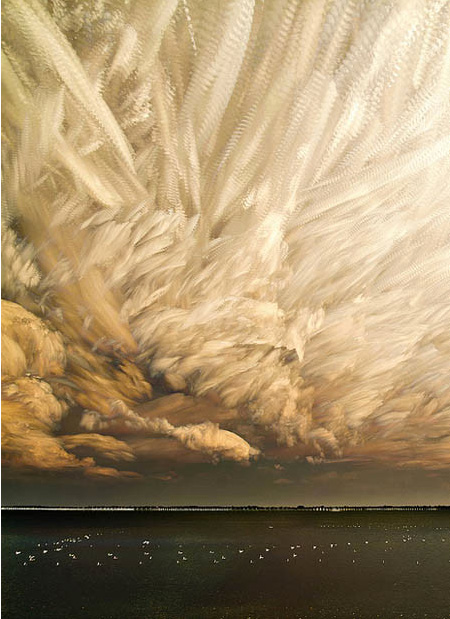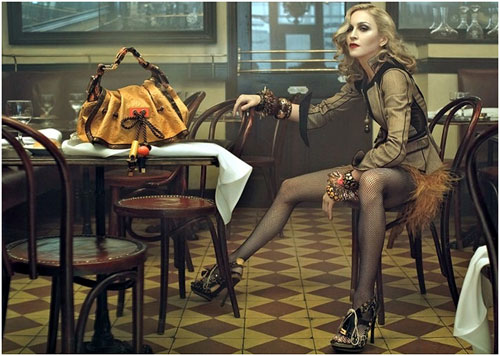photoshop
Bringing Back the Magic and Finding the Awesome
14/12/12 15:33 Filed in: Photography & Art

One might be tempted to say that photography has become hyped up as a technical spectacle of megapixels and Photoshop features, with little magic left. Technology enthusiasts might disagree and say that the technology is magical and fascinating, yet that is a car too. What is the magic of photography?
Imagine you are walking the path you walk everyday, the route to your work, to the bus, to the subway or to the mailbox and you thought you have seen all what is to see on that path. But one day you take your camera and you photograph while walking that so familiar path and suddenly you start seeing again. There might be little flowers in your neighbor’s garden, a broken wooden chair in a driveway creating interesting patterns on the tarmac or a cat spying on you every morning from behind the curtains.
Photography makes us seeing and appreciating the beauty in little things we usually pass unnoticed. Photographs are moments of awe that brighten up our days. Maybe the magic of photography is simply the “seeing” with little technology needed, although technology can add lots of fun.
Keep looking for the awesome and find magic.
Happy snapping!
Ute Sonnenberg for www.rohoyachui.com
Striking Photo Stacking Technique
13/11/12 13:27 Filed in: Photography & Art

There are many ways of painting with your camera and there are probably even more ways of painting with Photoshop, but this one is really a nice one.
Matt Molloy’s photo stacking technique cloud images look just amazing, like big rough brush strokes have set the clouds on the pictures.
Here is how Molloy does it:
“To make these ‘photo stacks’, I first shoot a timelapse, taking a photo every 5 seconds or so. (Settings differ depending on the subject and lighting conditions). I then merge several photos into one image using Photoshop. I start with the first image from the timelapse as a normal photo and then blend the rest of them with the ‘lighten’ blending mode. This only adds things that are brighter than what was in the first photo, and so you can see things like the paths of stars as they move across the sky. (The movement of the stars is actually from the earth’s rotation).”
It sounds like a lot of work, but it looks like being worth trying.

Find more of his work can be found on Flickr and 500px and good luck with playing with light.
Happy brush stroke setting!
Ute Sonnenberg for www.rohoyachui.com
People behind Photographers like Steven Meisel
08/11/12 15:32 Filed in: Photography & Art

Steven Meisel a press shy and amazing photographer from New York is famous for his fabulous fashion photography. He draws fantastic expressive compositions with his camera and his images have been many times on the covers of major fashion magazines.
Yet, behind a great photographer are also great people, like for example Pascal Dangin, the founder and chief of Box Studios in New York. Some people say he is the most sought after retoucher in the industry, others call him the Godfather of Photoshop. The world of a retouch studio is somehow mysterious, because we usually only see and know the photographer. Get an insight view of Box Studios with the video Mike Saunders shot and if you would like to learn more about Pascal Dangin read here:
How is your postproduction doing? Yes, most of us are doing it all ourselves and maybe we can learn something from the specialists.
Happy learning!
Ute Sonnenberg for www.rohoyachui.com
Photography before Photoshop: How Image Manipulation was Always There
01/11/12 08:33 Filed in: Photography & Art

Photoshop is the tool that makes the sky bluer, the model slimmer, the skin flawless and that puts things in the picture that weren’t there before. But image manipulation is not new. It existed before Photoshop was invented.
The Metropolitan Museum of Art in New York is hosting an exhibition devoted to manipulated photography before the digital age. The exhibition is called Faking It: Manipulated Photography Before Photoshop and runs from 11th October 2012 – 27th January 2013. It shows fantastic examples of image manipulation from before digital tools and can make one laugh when seeing the beginnings of this nowadays-advanced tool.
The companion book is available on amazon and probably a nice Christmas gift for the photography lover.
Happy creative faking!
Ute Sonnenberg for www.rohoyachui.com